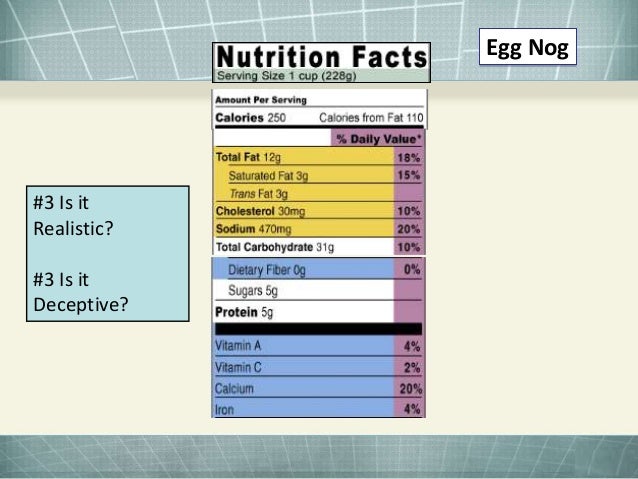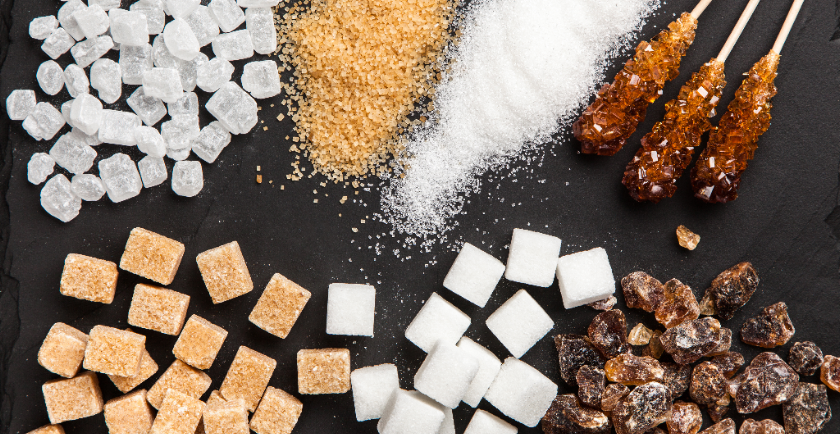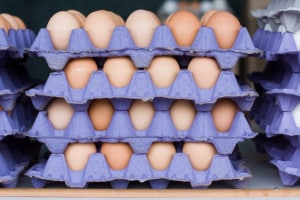43 reading food labels sugar content
Understanding Food Nutrition Labels - Heart Remember that the information shown in the label is based on a diet of 2,000 calories a day. You may need less or more than 2,000 calories depending upon your age, gender, activity level, and whether you're trying to lose, gain or maintain your weight. When the Nutrition Facts label says a food contains "0 g" of trans fat, but includes ... How to Understand and Use the Nutrition Facts Label | FDA It's important to realize that all the nutrient amounts shown on the label, including the number of calories, refer to the size of the serving. Pay attention to the serving size, especially how ...
How to Read Food Labels and Understand Sugar Content - yum. Gluten Free In particular, how to read a food label to determine the amount and type of sugar in a product. To achieve the above, we'll provide an introduction to label reading; a useful skill that applies to any packaged food product. The key food label components we'll look at include the Nutrition Information Panel (NIP) and ingredient list. I hope ...
Reading food labels sugar content
› nutritionsource › food-labelUnderstanding Food Labels | The Nutrition Source | Harvard T ... Chile implemented the Law of Food Labeling and Advertising in 2016, comprised of mandatory front-of-package (FOP) warning labels, restrictions on child-directed marketing, and the banning of sales in schools of all foods and beverages containing added sugars, sodium, or saturated fats that exceeded set nutrient or calorie thresholds. [1] Understanding sugar content on food labels - Diabetes Care Community Understanding sugar content on food labels is important, to ensure that you're consuming healthy amounts. Reading the ingredient lists and nutrition facts tables on packaged foods is a helpful way for you to check what kind, and how much, sugar a product has. The ingredients are listed in order of weight, beginning with the ingredient that ... Decoding Diabetes: How to Read Nutrition Labels | Accu-Chek The calories in the foods you eat are made up of fat, protein, and carbohydrates. Nutrition labels are typically made based on the assumption that you have a daily diet of 2,000 calories (kilocalories). Some labels will have a footnote that expand on this concept, providing numbers for both 2,000 and 2,500-calorie (kilocalorie) diets. Nutrients.
Reading food labels sugar content. LABEL READING: CARBOHYDRATES AND SUGARS - Renaissance Nutrition Center ... The label may list as many as six items: Total Carbohydrate. Dietary Fiber. Soluble fiber. Sugars. Sugar alcohols. Other Carbohydrates. Some manufacturers voluntarily include the subcategories of sugar alcohol and "other carbohydrates.". Others do not. How to Identify Sugar on Nutrition Labels | Days To Fitness Step 3 - Compare the sugar content of similar food products. A very effective way to see how much sugar is in the food you are eating is to compare product labels side by side. For example, take a no-added-sugar cereal and a regular breakfast cereal and compare total sugar per same-sized serving. You'll often be surprised at the difference. How to read package labels, calculate sugar content • Total sugars are shown in grams per serving, listed in the Nutrition Facts box. • 4 grams of sugar equals 1 teaspoon. This means the 15 grams of sugar in a serving of regular Froot Loops equals 3 ¾ teaspoons, while the 10 grams in a serving of the reduced-sugar version equals 2 ½ teaspoons. • A teaspoon of sugar equals 15 calories ... How To Read Food and Beverage Labels - National Institute on Aging At the top of the Nutrition Facts label, you will find the total number of servings in the container and the food or beverage's serving size. The serving size on the label is based on the amount of food that people may typically eat at one time and is not a recommendation of how much to eat. Read more about serving and portion sizes.
How to read food labels: MedlinePlus Medical Encyclopedia Always check the serving size first. All the information on the label is based on the serving size. Many packages contain more than 1 serving. For example, the serving size for spaghetti is most often 2 ounces (56 grams) uncooked, or 1 cup (0.24 liters) cooked. If you eat 2 cups (0.48 liters) at a meal, you are eating 2 servings. How To Read Food labels for Sugar | My Sugar Free Kitchen 5g/ml or less of sugar per 100g/ml = this would count as low sugar content. It means 5% of the ingredients are sugar. Between 5g/ml and 20g/ml of sugar per 100 grams = medium sugar content. With 20ml of sugar per 100 ml, this means the product is 20% sugar…not so good. Over 20g of sugar per 100g/ml = high sugar content. How to read labels for added sugar - That Sugar Movement Technically, 4.2g = 1 teaspoon of sugar, but for the easy on-the-spot calculation, just remember 4g equals one teaspoon. For example, a 375ml can of Coca-Cola is about 40g of sugar. Dividing that by 4 means there are 10 teaspoons of added sugar in the one can. As mentioned above, we want to aim for limiting intake of added sugar 6 teaspoons per ... Portion Control, Sugar Content and Reading Food Labels Portion Control, Sugar Content and Reading Food Labels. Samantha Gealoris. Virginia Tech Dietetic Intern. January 23, 2012. Portion Control. Portion Distortion Quiz. Today portion sizes are very distorted. A portion today is completely different from a portion 20 years ago. Large portion sizes are one of the main factors causing obesity and ...
Sugars on food labels - Sugar Nutrition Resource Centre Polys or sugar alcohols are naturally found in some fruits and used commercially in products such as chewing gum. Packaged foods in Australian and New Zealand must provide nutrition information on the labels, including ingredients, nutrition information panels and content claims. Food Standards Australia New Zealand (FSANZ) are the regulatory ... Reading labels | Diabetes UK These days, food labels should have all the key nutritional information you need to count the carbs in your meal. This video will help you to understand food labels and learn about the carbohydrate levels in everyday meals, with tips and advice from Jess along the way. YouTube. Diabetes UK. 51.8K subscribers. Food labels - NHS All nutrition information is provided per 100 grams and sometimes per portion of the food. Supermarkets and food manufacturers now highlight the energy, fat, saturated fat, sugars and salt content on the front of the packaging, alongside the reference intake for each of these. You can use nutrition labels to help you choose a more balanced diet. Understanding food labels - Diabetes Ireland Understanding food labels. Food labels give us details such as the weight of the item and the best-before-date. Most will also provide all or some of the following: All the ingredients are listed in order of their descending weight, this means that the food contains more of the ingredients listed first; and less of those listed last. For ...
Although food labels have some important advantages, there are also some problems related to them. For instance, food labels might mislead people and may influence their decisions in a rather suboptimal manner. Many producers claim that their products are “low-fat”, “low-carb” or other declarations that seem to be positive at first glance.
Learning To Read Labels - Diabetes Education Online On a nutrition food label, subtract the fiber from the total carbohydrate amount. When you read food labels, the grams of sugar are already included in the total carbohydrate amount, so you do not need to count this sugar amount separately. The grams of sugar listed include both natural sugars, from fruit or milk, and added sugars.
chowhound.comChowhound Thank you for making Chowhound a vibrant and passionate community of food trailblazers for 25 years. We wish you all the best on your future culinary endeavors.
Reading Food Labels | ADA - American Diabetes Association The Nutrition Facts labels on foods are really the key to making the best choices. We'll cover the basics so that these labels make shopping easier for you. You've heard it all. From carb-free to low-carb, to whole and empty carbs, it's hard to know what it all means. Blood sugar highs and lows aren't always easy to understand.
How To Easily Read The Sugar Content On A Food Label Here's the calculation: (this calc is not perfectly exact but close enough to use as a general rule) 1) Check out the nutritional label on any food packaging and find the amount of total carbohydrate in grams. 2) Add the Sugars and Carbs together. 3) Subtract the fiber grams. If the fiber is less than <1 gram it may not be listed.

6 Easy Ways to Spot Hidden Sugars in Foods + 12 Foods That Have Shockingly More Sugar Than You ...
Reading food labels: Tips if you have diabetes - Mayo Clinic Sugar-free foods may play a role in your diabetes diet, but remember that it's equally important to consider carbohydrates as well. A sugar-free label means that one serving has less than 0.5 grams of sugar. When you're choosing between standard products and their sugar-free counterparts, compare the food labels.
› Chefs-Path-Airtight-StorageAmazon.com: Airtight Food Storage Container Set - Set of 6 ... Airtight Food Storage Container Set - Set of 6, All Same Size, Includes Labels & Marker - Kitchen & Pantry Organization Dry Food Containers, BPA-Free - Clear Plastic Canisters with Improved Lids Visit the Chef's Path Store
› food › new-nutrition-facts-labelAdded Sugars on the New Nutrition Facts Label | FDA Feb 25, 2022 · Why Are Added Sugars Now Listed on the Nutrition Facts Label? The Dietary Guidelines for Americans recommends limiting calories from added sugars to less than 10 percent of total calories per day ...

Reading Food Labels-Why You Need to Look on the Back of the Package - The Kidney Disease Scholars
Understanding food labels - Diabetes UK Here's the difference: Fat free: has to have no fat, but check the ingredients list for added sugar, which are often used to replace the fat. Sugar free: check the ingredients list for fats which may replace the sugar. Low fat: the product has 3g or less of fat per 100g. Low sugar: has less than 5g of sugar per 100g.
Food Labels | CDC All the numbers on this label are for a 2/3-cup serving. This package has 8 servings. If you eat the whole thing, you are eating 8 times the amount of calories, carbs, fat, etc., shown on the label. Total Carbohydrate shows you types of carbs in the food, including sugar and fiber. Choose foods with more fiber, vitamins, and minerals.
How to Read a Food Label | Atkins Wrong! Look carefully at the Nutrition Facts label and you will see that a single serving is calculated not as 20 ounces but as eight ounces. You are expected to share that bottle with a friend and a half! That means that all those calculations about carbohydrate content, sugar content and calories are for only eight ounces, not the whole bottle.
kidshealth.org › en › teensFood Labels (for Teens) - Nemours KidsHealth A food with 5% or less of a nutrient is low in that nutrient. A food with 10%–19% of a nutrient is a good source of that nutrient. A food with 20% or more of a nutrient is high in that nutrient. The information on food labels is based on an average adult diet of 2,000 calories per day.
How to Read Nutrition Labels - HealthHub Nutritional data. Focus on the key nutrients that are important to you. If you are on a diet, look at the energy or calorie values. For people with high blood pressure, zoom in on the sodium value or check the saturated fat and cholesterol amounts if you have high cholesterol. Be mindful of fat content; no more than 30 per cent of your daily ...
› understanding-food-labelsUnderstanding food labels - Canada.ca Find information on food labels and how to understand them. Learn about nutrition facts tables, serving size, list of ingredients, % daily value and nutrition claims.
How to Read Food Labels Without Being Tricked - Healthline Still, processed foods that are labeled low-carb are usually still processed junk foods, similar to processed low-fat foods. Made with whole grains. The product may contain very little whole ...







Post a Comment for "43 reading food labels sugar content"